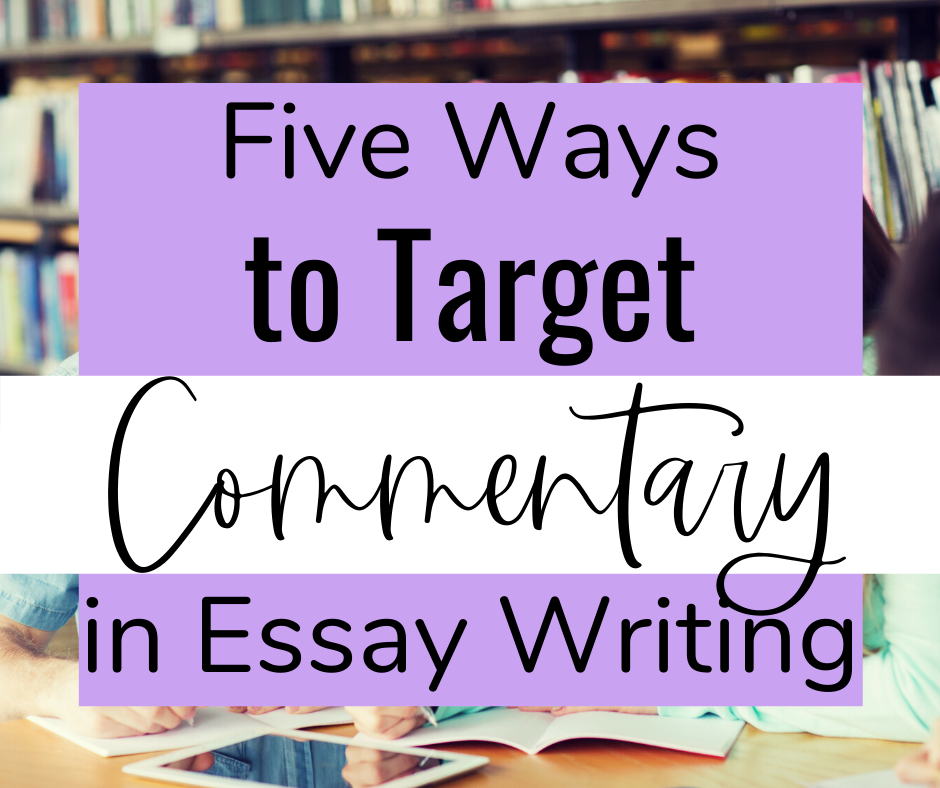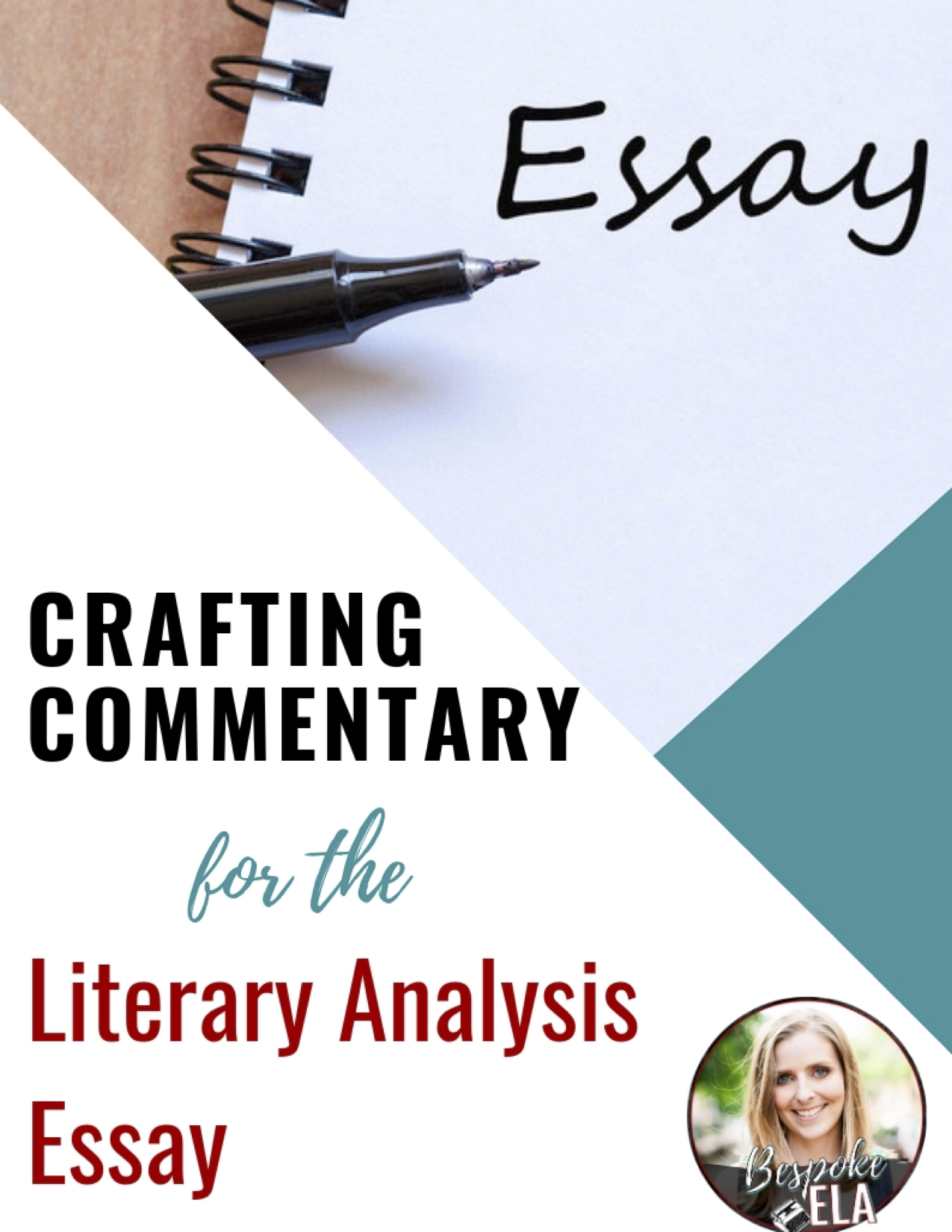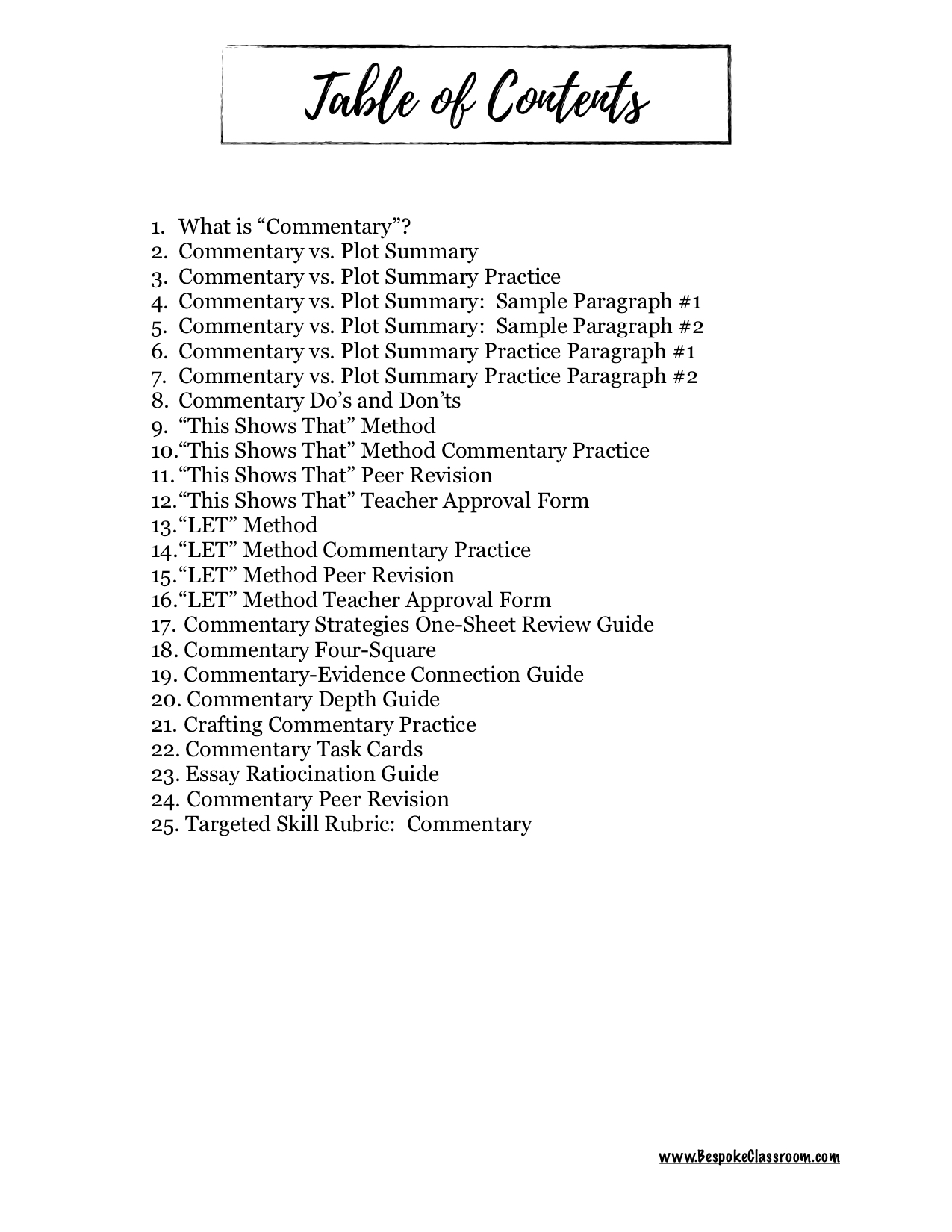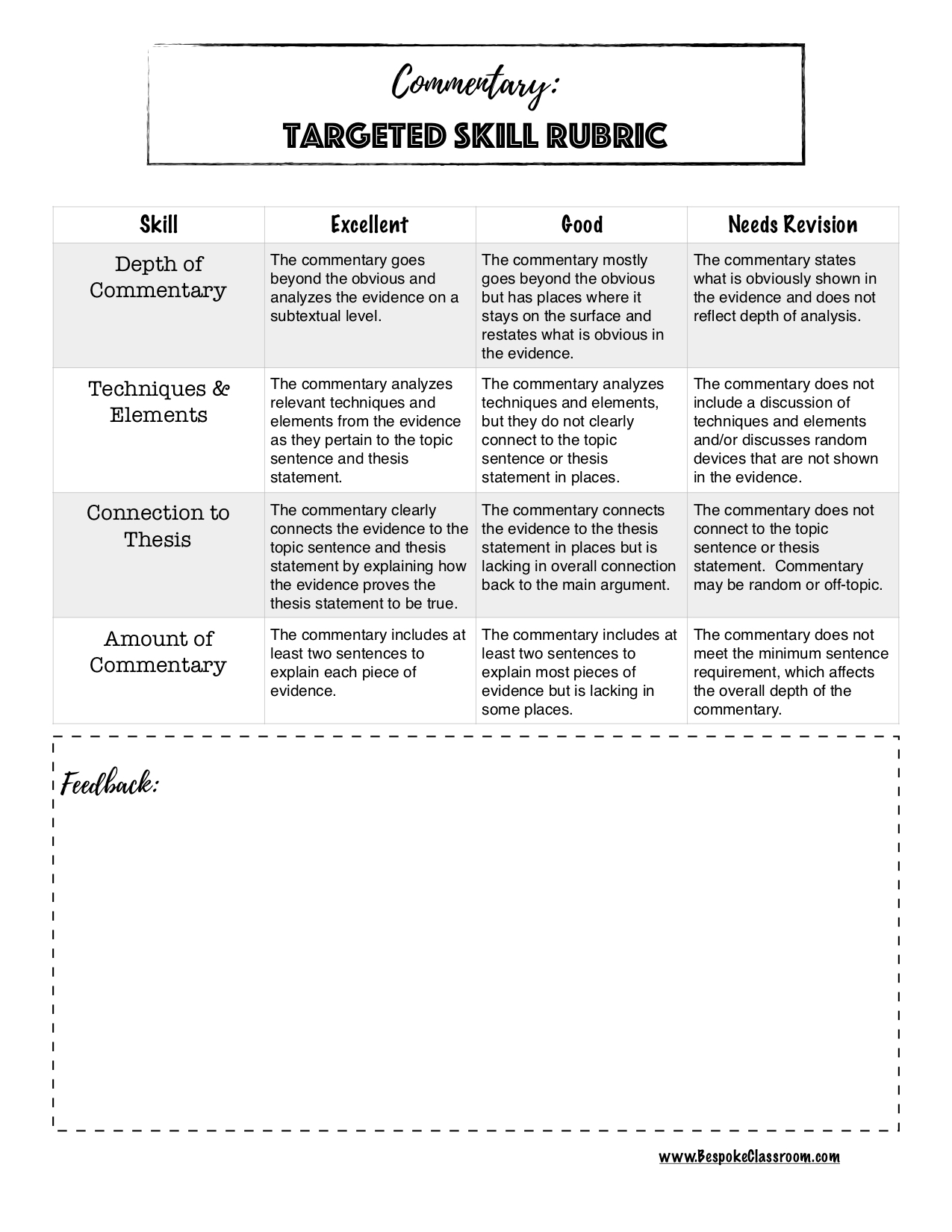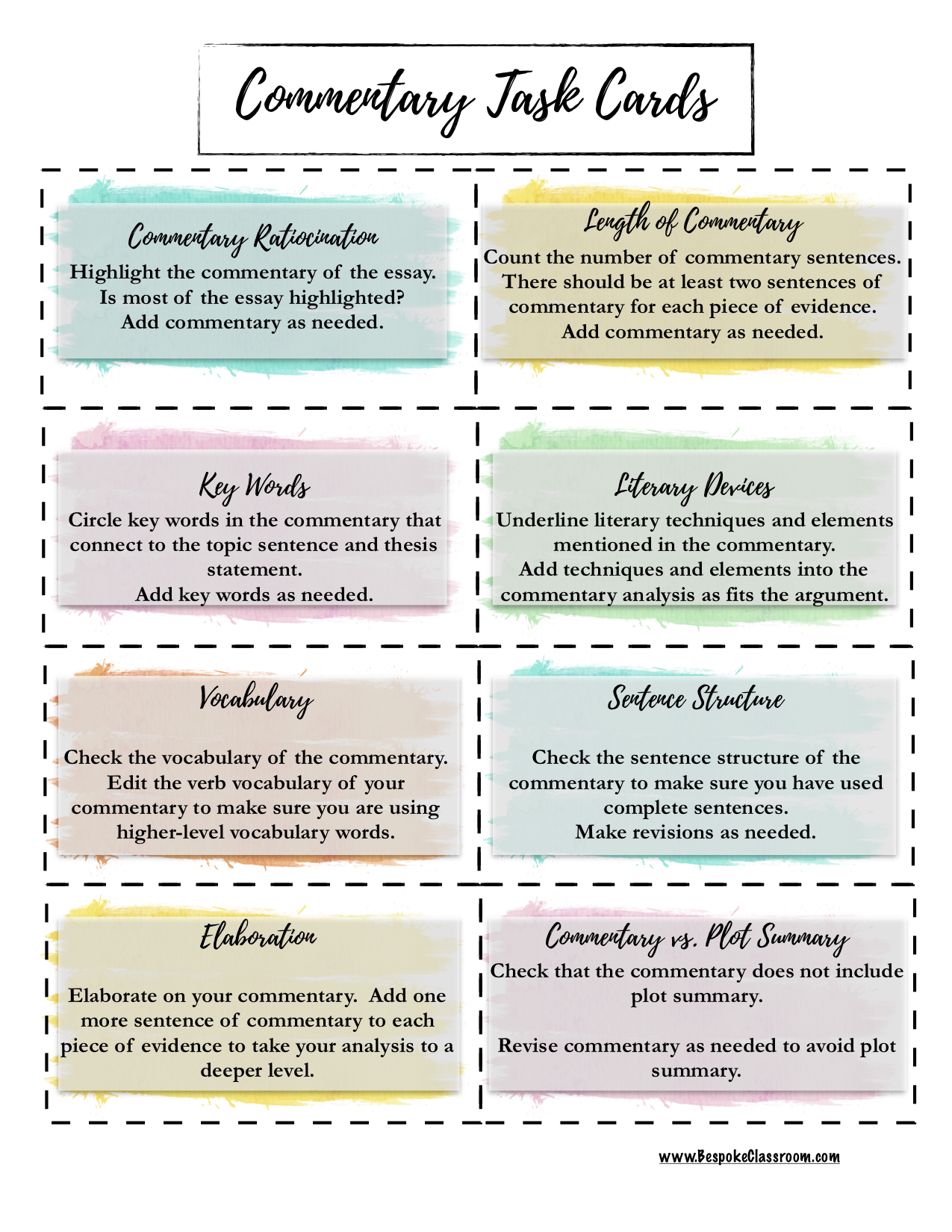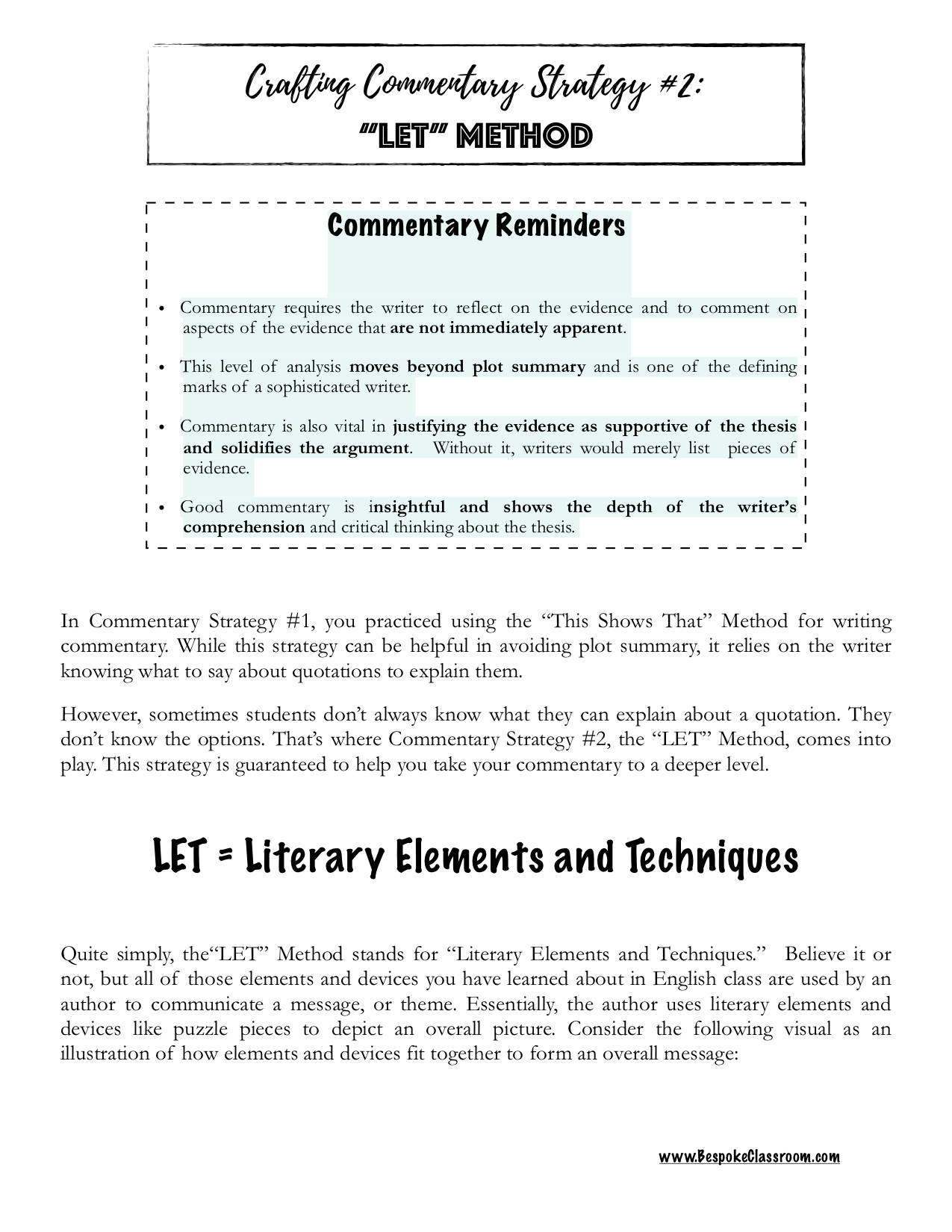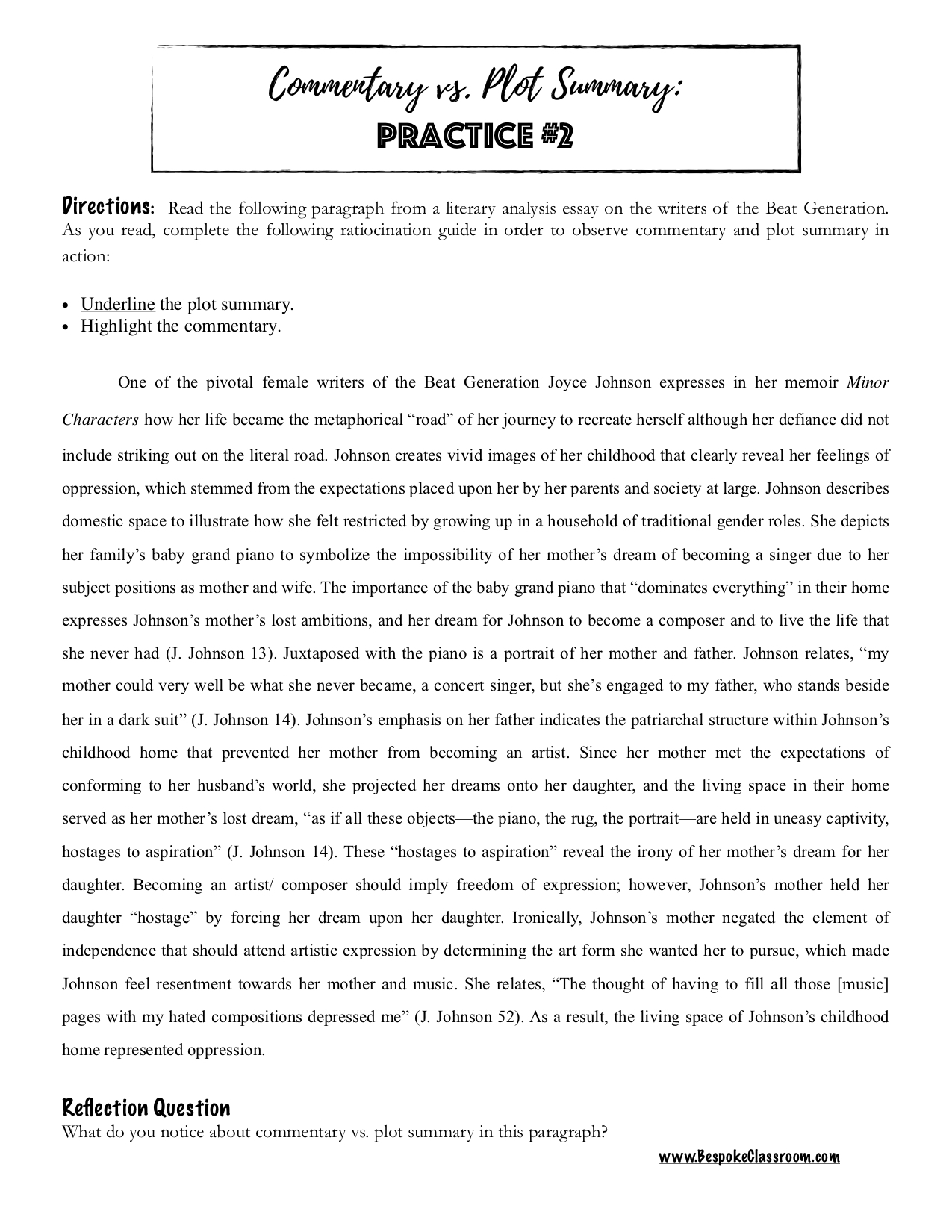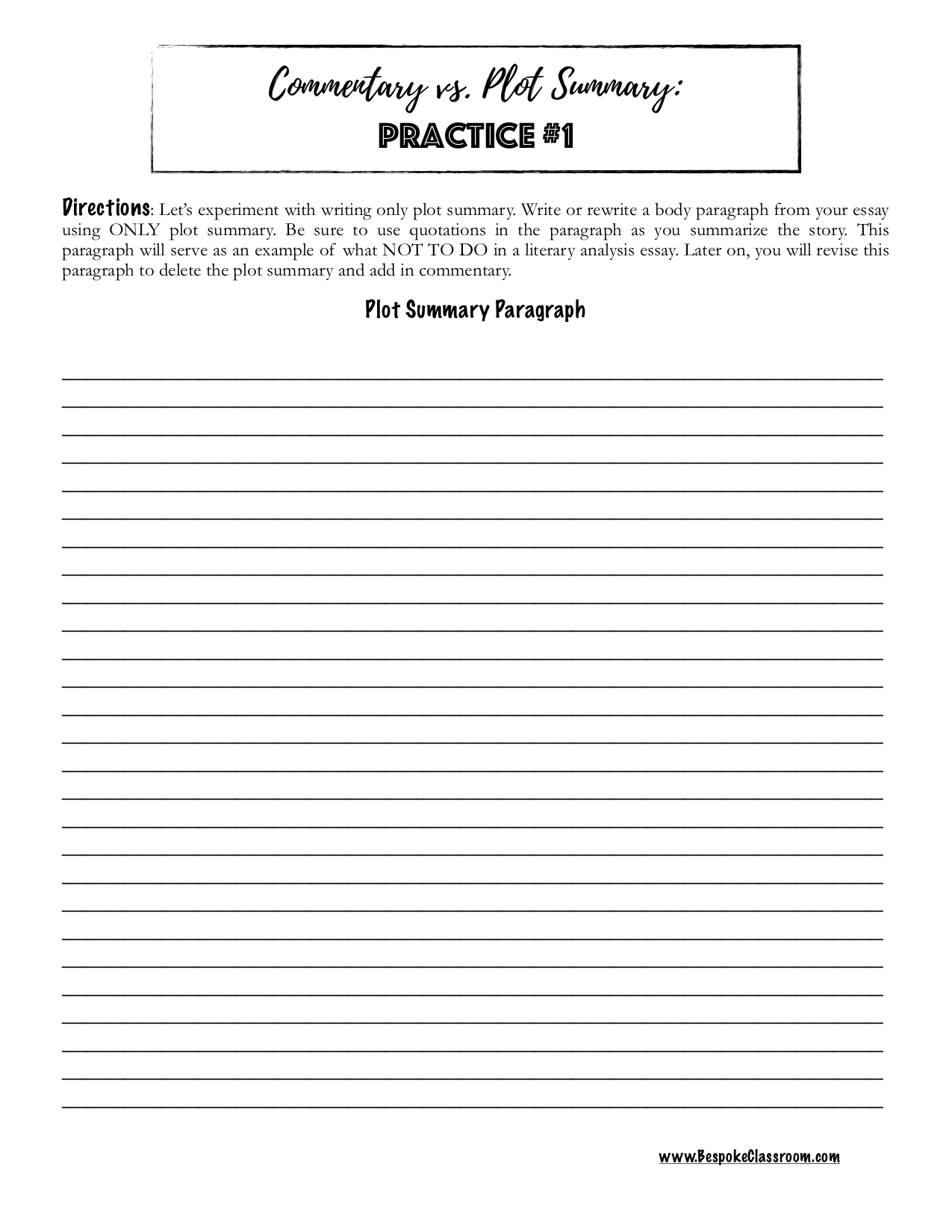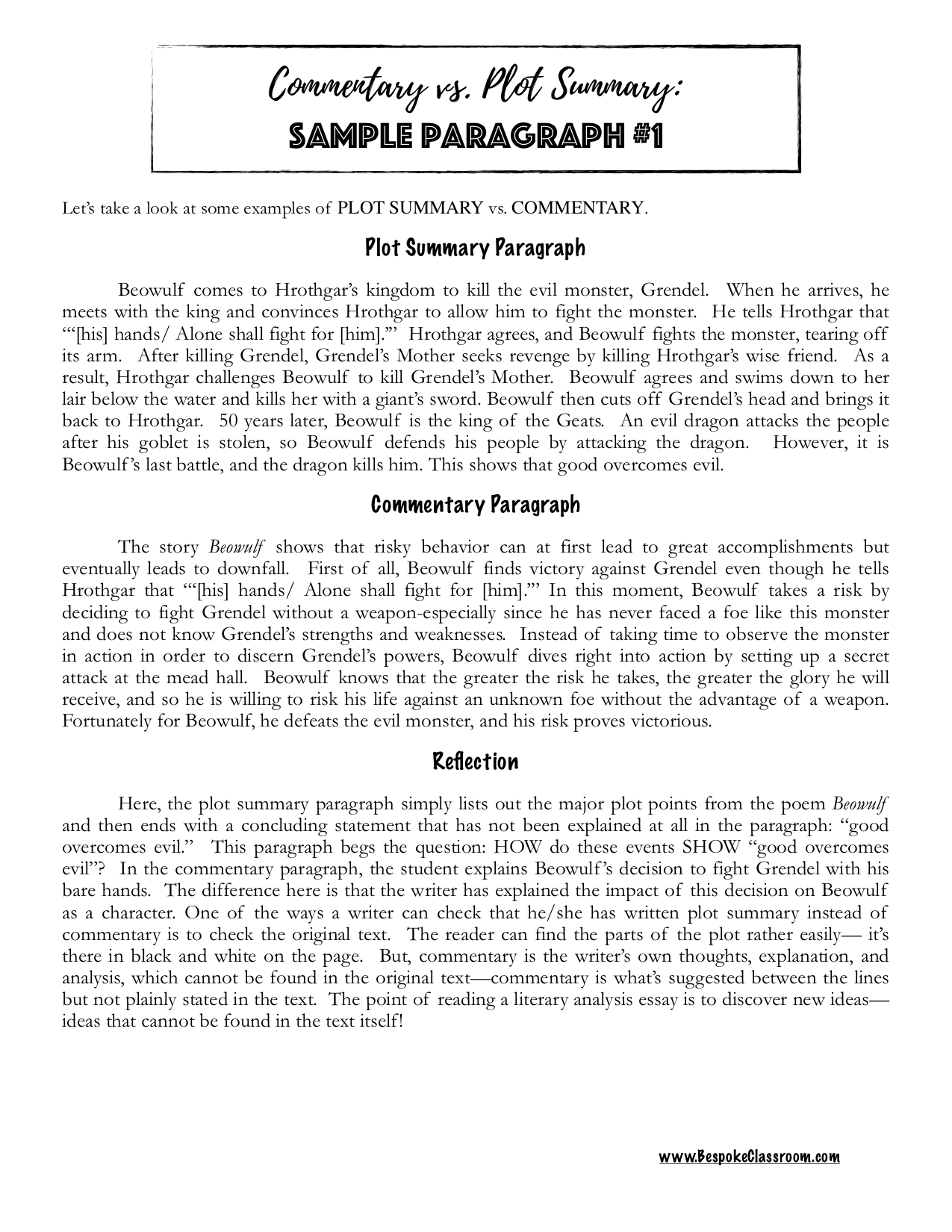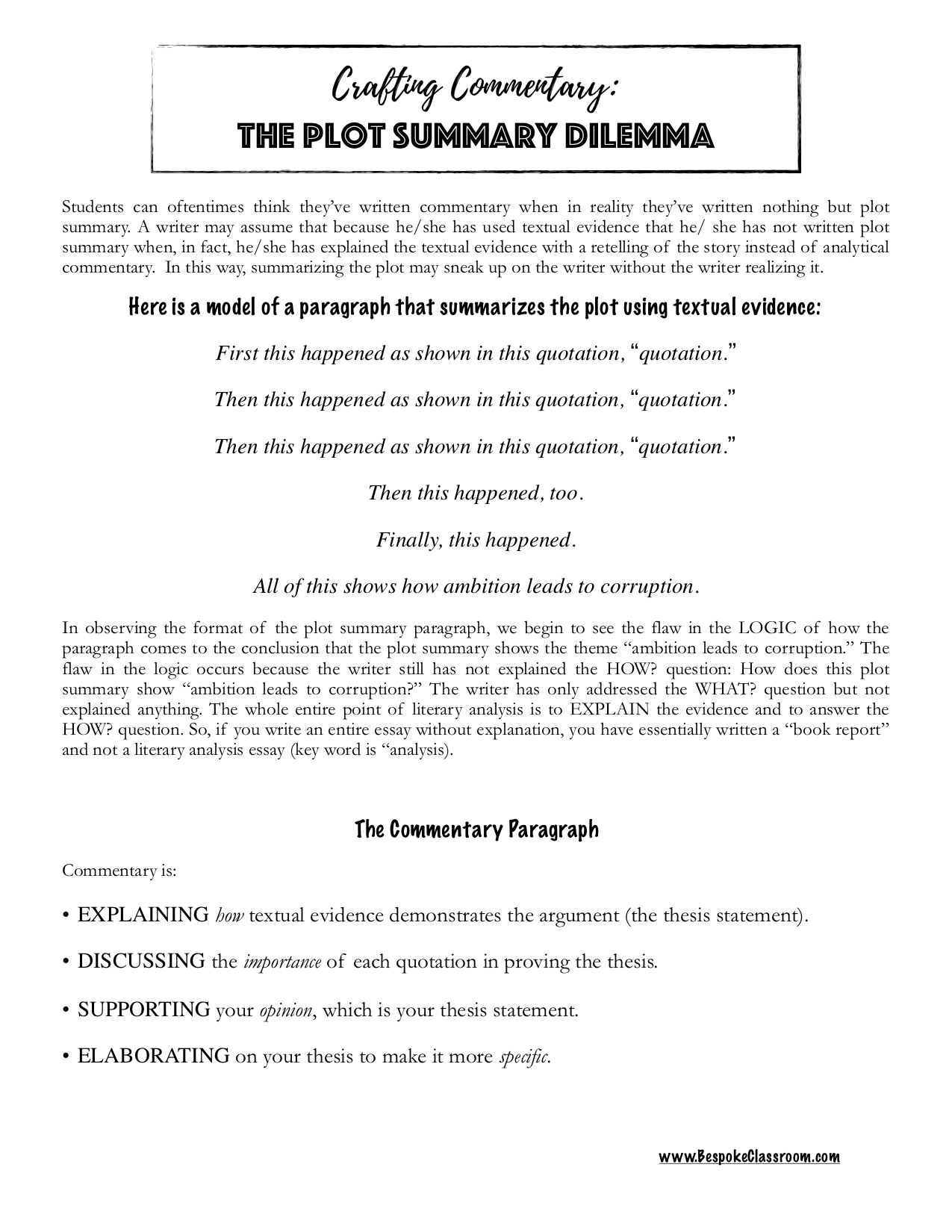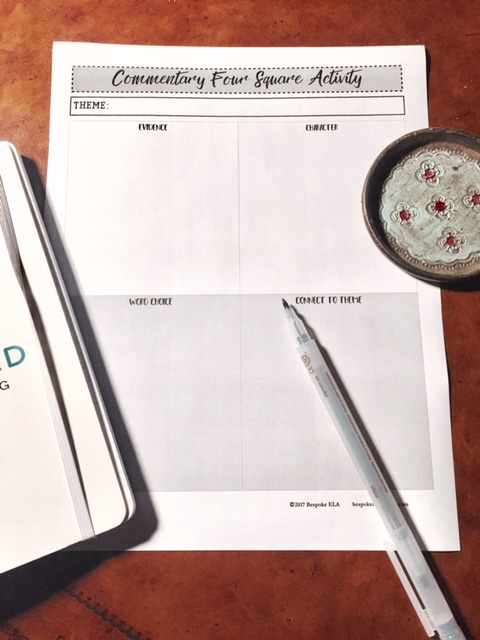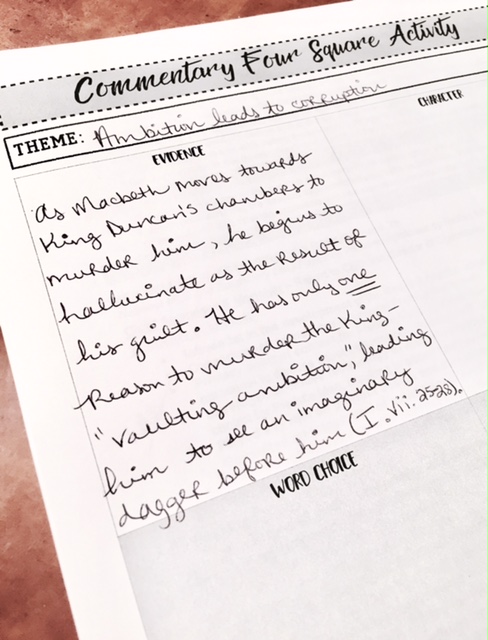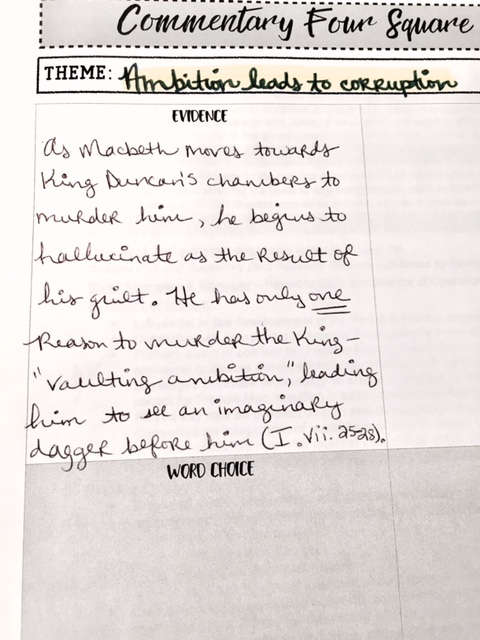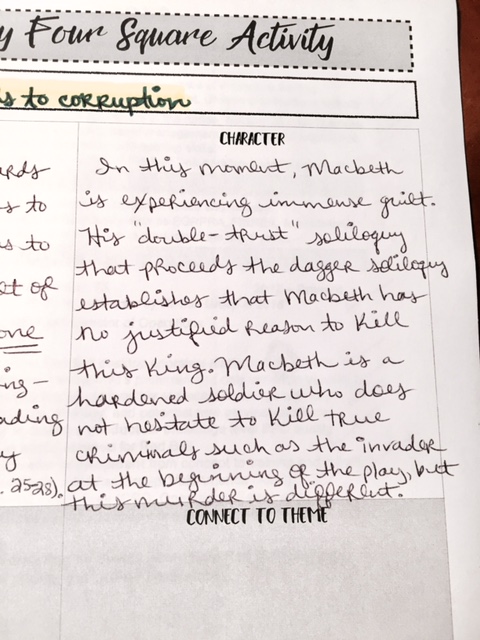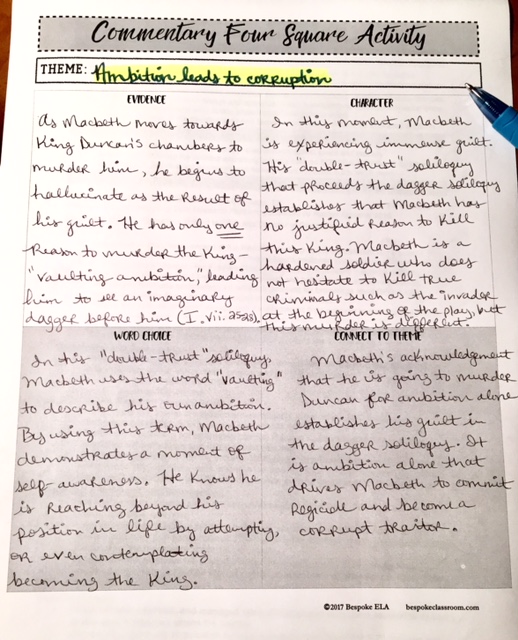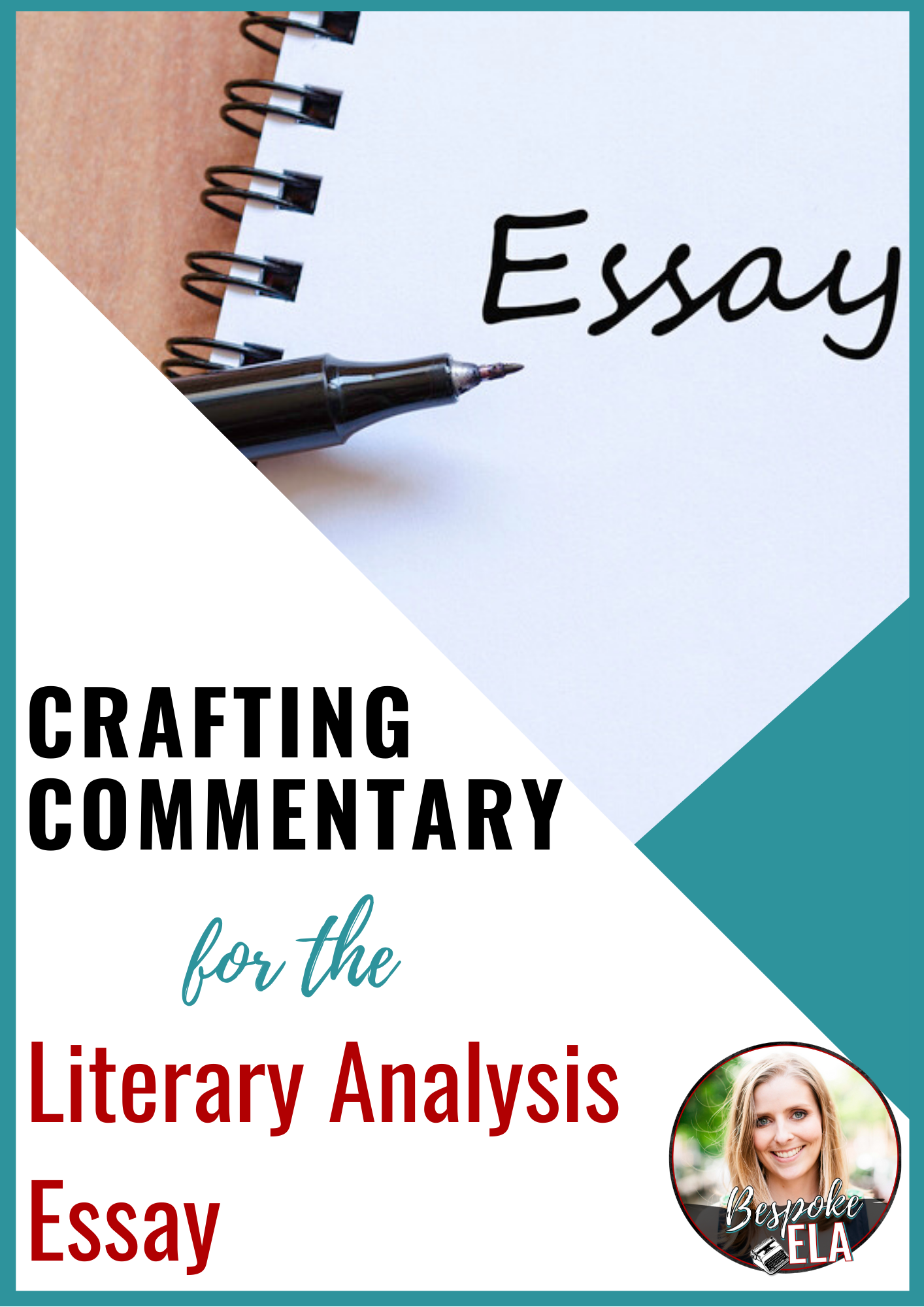Five Ways to Target Commentary for Essay Writing
The commentary part of any essay is always the most difficult. It is the part of the essay in which the writer analyzes evidence, and this analysis speaks to the writer’s own unique voice. While we have standard, formulaic ways to teach other parts of the essay such as thesis statements, blending quotes, topics sentences, etc., commentary is different. There really isn’t a formula for teaching our students how to have unique thoughts. However, there are definitely strategies we can use with our students to help them practice writing commentary as well as take it to a deeper level. This is a topic that I have spent quite a bit of time on simply because it is the one skill that my students struggle with the most. You can find more posts from me on this topic here and here.
Here are FIVE ways to target commentary in essay writing:
Is it commentary or analysis? Clarifying Terminology
Well, it’s both! One of the most basic confusions for our students about commentary is the fact that different teachers call it different things. For example, I call it commentary while another teacher may call it analysis and still other teachers may refer to it as explanation or elaboration. One of the first lessons in teaching commentary should be to dispel any confusion over the terminology so that students can all be on “the same page” while working on this writing skill. In brief, the commentary part of the essay is the part where the writer explains how the evidence proves the thesis. It is the part of the essay in which the writer comments upon the evidence and points out what the evidence shows. But we can’t just stop there. Students need ample practice with this writing skill so that they avoid writing obvious summaries in place of analysis. But crafting commentary begins with clarifying terminology first and foremost.
Ratiocination or Essay Coding
This is one of the very first lessons I have my students do with sample essays before they even begin the writing process. Color-coding, or ratiocination, is the process of highlighting different parts of the essay according to a key. For example, students might highlight the thesis statement and topic sentences in yellow, the textual evidence in blue, and the commentary in green. By color coding the essay, they can begin to draw connections throughout the essay. The thesis and topic sentences are all connected by the same argument, so by highlighting all of these items in the same color, students can visually “see” this connection. The same goes for highlighting textual evidence. Students can begin to “see” the role that evidence plays in the essay, and they can very quickly determine if there is enough evidence to prove the thesis. Commentary should be highlighted the most because most of the essay should be commentary/ analysis. There should be twice as much commentary in an essay as evidence. If this is not the case, students haven’t taken their commentary to a deep level, and they need to go back and add more commentary where it is needed. I have created a FREE “Ratiocination Guide” for you to download from the TeachWriting Freebie Library, which is accessible when you subscribe. This guide will take your students through the color-coding process and help them begin to draw connections to how the different parts of the essay interact with each other.
The “This Shows That” Method
This is also another very basic method for targeting commentary, but it WORKS! In this method, students begin a sentence after textual evidence with the words, “This shows that…”. Be beginning with these words, students are forced to explain what the quotation shows rather than what it says. These are two different concepts.
Example of What the Quote Says
In Macbeth by William Shakespeare, the witches begin the play by saying, “Fair is foul and foul is fair.” The witches in the play say that what is good may actually be bad and what is bad may actually be good.
Example of What the Quote Shows
In Macbeth by William Shakespeare, the witches begin the play by saying, “Fair is foul and foul is fair.” This shows that the witches are able to see into the future and that they are anticipating foul play. Since they introduce this concept before we meet any other characters, it creates dramatic irony that rouses suspicion of every character.
So, the difference between what the quote says versus what it shows comes down to this: one is obvious and the other is not; one is a paraphrase and the other reads “between the lines.” Now, don’t get me wrong—having students first paraphrase the quotation before analyzing it is an effective stepping stone to analysis. If students do not understand what the quote actually says, then they won’t be able to analyze it in the context of the thesis argument. However, the point here is that students cannot stop at the paraphrase level. They must go beyond this literal level to the abstract level of analysis.
The “LET” Method
So, how do we get students to go beyond the obvious? How do we teach them to analyze evidence? That’s a great question and one of the main reasons why I invented the “LET” Method. You can find more information about this method as well as an entire commentary bundle by Bespoke ELA by clicking here. This method stands for “Literary Elements and Techniques.” Seems pretty basic, right? It is! The essence of this method is to have students first identify the literary elements and techniques within a quotation and then explain how those elements or techniques prove the topic sentence and thereby the thesis statement.
To clarify, literary elements are the fundamental elements that are found in every story or piece of literature. These include: setting, point of view, style, conflict, character, and plot. Literary techniques delve more into the element of style with figurative language, and these techniques are not found in every piece of literature. Techniques include metaphor, simile, irony, personification, diction, allusion, apostrophe, and others.
Here is an example of the “LET Method” in action:
Blended Quotation: In George Eliot’s Middlemarch, the narrator states, “Her hand and her wrist were so finely formed that she could wear sleeves not less bare of style than those in which the Blessed Virgin appeared to Italian painters; and her profile as well as her stature and bearing seemed to gain the more dignity from her plain garments, which by the side of provincial fashion gave her the impressiveness of a fine quotation from the Bible,— or from one of our elder poets,— in a paragraph of today’s newspaper.”
Thesis Statement: George Eliot uses imagery and allusions to show that beauty comes in all forms and is something to be captured through art.
Devices Included in this Quotation: imagery, allusion, alliteration, analogy
Commentary: In this instance, the narrator uses imagery to describe the delicate beauty of the female figure. This beauty is emphasized by several allusions to the “Blessed Virgin,” “Italian painters,” the “Bible,” “our elder poets,” and “today’s newspaper.” These illusions work to show that her beauty is impressive and something of the sort that would appear in fine publications.
Using the “LET Method” gives students something concrete to explain about a quotation—as long as they can identify the devices being used. Thus, it is imperative to spend time identifying devices so that students can begin to pick up on these devices when crafting commentary.
The Commentary Four-Square
The commentary four-square is an activity in which students take a piece of paper and divide it into four squares. The top-left square contains the topic sentence. The top-right square contains the blended quotation. The bottom squares contain a sentence of commentary each. You can find more about this concept along with a free download of the template by clicking here. The idea of having students “map out” a “chunk” of analysis helps them to see each distinct portion as well as how it all fits together. I like to have students complete these in groups and then have groups share them using the ELMO device. It can be quite an eye-opening experience for students if you have them all analyze the exact same quotation and topic sentence because it will punctuate the limitless bounds of writing commentary. Students will be amazed at how much can be said about a single quotation. They can also record some of these ideas to use in an essay. The Commentary Four-Square helps students practice the previous methods in a new context.
Related Resource
About the Author
Meredith is the founder and creator of TeachWriting.org and Bespoke ELA. She has taught high school English for 10+ years in Dallas, Chicago, and New York City and holds a M.A. in Literature from Northwestern University. She has always had a connection to the written word-- through songwriting, screenplay writing, and essay writing-- and she enjoys the process of teaching students how to express their ideas. An avid tea drinker and anglophile, Meredith enjoys life with her husband, daughter, and sweet pups.

